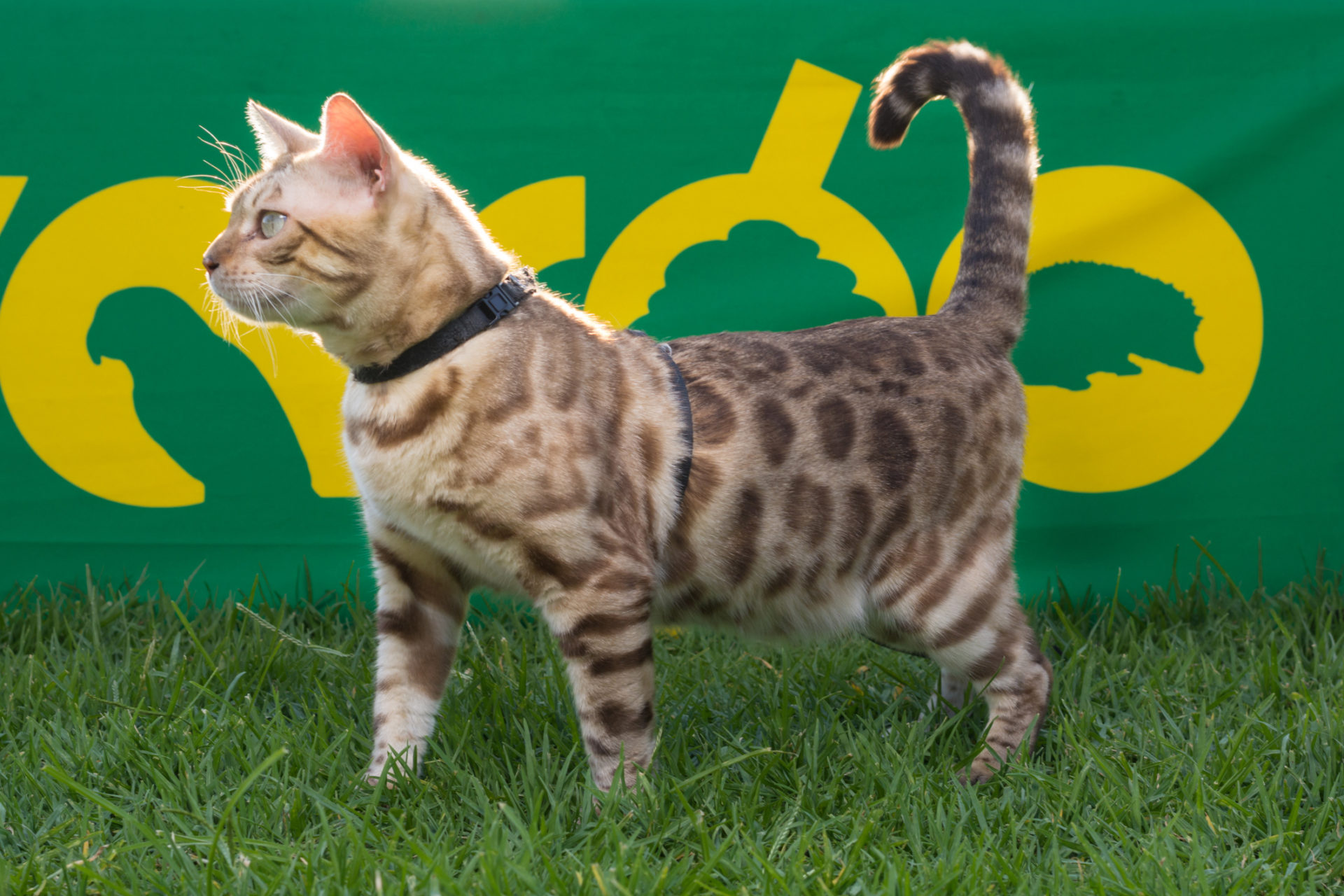The Bengal Cat named Leo that has made a Big Impact.
Read on to learn about Bengal Cat Leo’s story, his impact in the community and how you can help!
Have you ever felt that some of the people designated as leaders in your life don’t have your best interests in mind? I’ve recently read an article that 1.7 million people have signed a petition to sue the French government for not taking action against climate change. And another regarding 21 youths involved in a lawsuit against the US government. In the last 60 years we’ve created an estimated 6.3 billion metric tons of plastic. And an astonishing 90.5% of that plastic waste has never been recycled! As a result, the effects of the climate crisis, over abundance of waste and lack of understanding impact not only human lives but wildlife on a global scale.
In times like these it is important to remember the power each and every one of us has within ourselves. I’ve always said that small changes can lead to big impacts.
Our animal ambassador Leo the Bengal Cat works hard to promote a message of conservation, education, and heart warming connections with the natural world around us.

Meet Leo
This Bengal Cat was just 2 years old when we adopted Leo through a local rescue in September of 2015. He’s a hybrid breed of cat, part domestic cat, part wild cat/leopard. (Felis catus x Prionailurus bengalensis). Leo the Bengal Cat and his family members (mother and brother) along with other cats and dogs were left in an abandoned home by the breeder who was breeding Bengal Cats (and possibly other animals). As a result, the poor condition Leo was raised in left him to suffer with severe ear infections in both ears. But, with proper care, treatment and love, his true people-friendly personality shined through.
Destined to become an animal ambassador and teach the world. This Bengal Cat has met thousands of children! He has been a star animal ambassador at hundreds of education programs. Additionally, he helps to inspire everyone to care about the issues facing all cats in the wild.
Bengal Cats are very active and extremely intelligent. So a normal day for Leo includes a few naps and much climbing on his cat shelves and adventuring around his home all day. In addition he loves watching for lizards and birds outside. Although affectionate, he isn’t much of a lap cat. However, one of his favorite things to do is go for a walk outside on his leash. For instance, he loves to explore with his handler and needs lots of environmental stimulation. In other words, he’s essentially a small version of a wild cat! That’s how Bengal Cat Leo is!

Where do Bengal Cats come from?
The breeding of the Bengal started with Dr. Willard Centerwall, a professor of pediatrics, contributed multiple Leopard Cat hybrids bred from two Asian Leopard Cat brothers. Most importantly, the doctor bred the Asian Leopard Cats to domestic levels to help his studies in immuno-compromised humans. Above all, these hybrids were key in the development of the Bengal breed. It wasn’t until Dr. Centerwall met Jean Mill in 1980, whom took on his F1 kittens that she would restart her program from where she left off in 1963. After that, she successfully got the Bengal cat recognized by The International Cat Association (TICA). Essentially, Jean was developing the breed, and continued it past the first generation hybrids. Likewise she pushed fellow breeders to breed these hybrids (the Bengal Cat) further generations down, register them with TICA, and establish the Bengal as a domestic breed.
Leo’s Plight
After being with Zovargo for more than 2 years, this Bengal Cat, Leo began showing signs he’s was not feeling well. He had been rejecting food, overly sleepy with lots of resting. And simply not showing his normal “wild cat” behavior. His feline Veterinarian had determined he had extremely high liver values and referred us to another clinic for further testing. At the specialty hospital all the tests were indicating he may have pancreatic disease or some other more serious liver issue.

The Fortunate Side
Luckily, his pancreatic tests came back negative for pancreatitis. Consequently he had been prescribed steroid medication and a prescription diet that’s easy to digest and therefore easy on his organs. Meanwhile, after six long months his appetite returned to normal and he began to act like his old self again.
On November 19th, 2018 Leo had been given the green-light to return to educating people about his conservation message. He had been eagerly attempting to come out every chance he gets; literally jumping in any travel crate to prove he’s really ready to go.
So please remember to support Bengal Cat Leo and his message for conservation and do a better job with your recycling, plant more trees, eat locally grown foods and most importantly; spread the word! Small changes can lead to big impacts.
You can learn more about him and all Zovargo‘s other animal ambassadors by visiting our website: https://www.zovargo.org/animal-ambassadors-san-diego/
You can also visit our blog for more stories, eco-friendly tips – and more!

